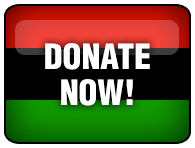8 Things You Did Not Know About the Australian Black Panther Party
The American Black Panther Party for Self Defence influenced the development of a Black Power consciousness among Australian Aborigines.
1. In 1971, Aboriginal revolutionary, scholar, political activist and Black Power activist Denis Walker and Sam Watson co-founded the Australian Black Panther Party and declared the BPP to be “the vanguard for all depressed people, and in Australia the Aboriginals are the most depressed of all.”
2. The Australian Black Panther Party set up headquarters in Brisbane, the capital city of Queensland with a small group of “field marshals” that included indigenous activists Paul Coe, Gary Foley, Gary Williams and Billy Craigie. There was only 10 members of the Australian Black Panther Party. This Australian chapter of the Black Panther Party adapted the politics and militant style of the American Black Panther Party to address issues affecting Aboriginal people and make demands for equality of treatment in education, health and legal representation, the abolition of discriminatory legislation, an end to police harassment, and the simple right to live without racism.
3. Inspired by the example of the American Black Panther’s community survival programs, they developed their own free medical and legal services, housing projects and a National Black Theatre.
4. In October 1970, the Aboriginal Legal Service of New South Wales was set up as a response to the police brutality and to provide legal representation in court for the Aboriginal community. With support from law academics it was the first organisation in that state to be conceived, established, and controlled by Aborigines since the 1930s. They set up “pig patrols”, to monitor police encounters with the Aboriginal community and record infringements of civil rights. The success of the New South Wales Aboriginal Legal Service inspired the establishment of The South Australian Aboriginal Legal Rights Movement in November 1971, The Victorian Legal Service in June 1972, Queensland and Western Australia also established services in 1972 and there was an Aboriginal Legal Service in every state and territory by 1974. These organisation’s exist today.
5. With support from government funding and grants, the Aboriginal Medical Service was established in 1971 to provide basic health care to the Aboriginal community and improve the health and wellbeing of Aboriginal families who suffered with malnutrition. These programs included variations of the Black Panther Party’s “Feed the People” and “Free Breakfast for Children” programs. Volunteers distributed free fruit and vegetables to Aboriginal families in Sydney, and the Breakfast for Children program, run in conjunction with a local chapel, provided Aboriginal schoolchildren with breakfast on school mornings where otherwise they might have eaten nothing.
6. The Aboriginal Legal Service and the Aboriginal Medical Service led to the creation of the Aboriginal Housing Company (AHC) in 1972 to provide accommodation to the Aboriginal community, which continues to provide this service to this day.
7. Inspired by a trip to Barbara Ann Teer’s National Black Theatre in Harlem, Bob Maza set up the National Black Theatre in 1972 to raise awareness of political activism through theatre and to challenge the stereotypical views of Indigenous Australians on the TV. Their production Basically Black, a series of satirical sketches ran for 6 weeks at the Nimrod Theatre in Sydney.
8. Similar to the American Black Panther Party who was monitored by the FBI’s covert action program COINTELPRO, the Australian Security Intelligence Organisation (ASIO) monitored the rise of the Black Power movement throughout Australia during 1969 – 1975. During seven years of surveillance, ASIO officials monitored Black Power ‘disturbances’ within Aboriginal communities and sought to document the actions of Black Panther members

